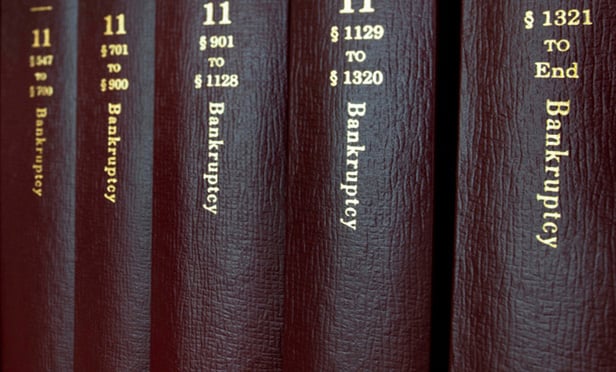Features

Why Law Firms Are Innovating Document Production In 2025: Security, Sustainability and Efficiency In a Transforming Landscape
The legal industry is undergoing a transformation at an unprecedented pace, driven by two powerful forces: the shift to flexible operations and the rapid acceleration of technology adoption. On top of this, clients, often ahead of their law firm counterparts in leveraging technology, are demanding faster, more secure, and more sustainable ways of working. Together, these may be the greatest operational challenges law firms have faced.
Features

Ruling In Music App’s Contract Breach Complaint Against Apple’s App Store
A California federal court rejected music streaming platform Musi’s request for a preliminary injunction against Apple, after Apple removed the Musi app from Apple’s app store due to copyright infringement concerns.
Features

Appellate Division First Department Declares Fee Mandate of Soho/Noho Rezoning Unconstitutional
This past December, the Appellate Division, First Department struck down a key provision of New York City’s recently amended Zoning Resolution.
Features

Bankruptcy Code Can Present Significant Risks to Lenders
This article discusses two situations where a lender received payments and later was forced to disgorge them. These opinions illustrate two of the ways the bankruptcy code can present significant risks to lenders even after the lender receives payments in accordance with loan agreements or even a court order.
Columns & Departments

Landlord & Tenant Law
Yellowstone Injunction Denied Because Failure to Procure Insurance Is an Incurable DefaultLandlord Bound By Agreement Setting Market Rent At Pandemic Levels
Features

Mitigating AI Risk In Light of Increasing Regulatory and Shareholder Scrutiny
Driven by promises of increased efficiency and innovation, companies spanning a wide variety of industries are rapidly adopting and investing in artificial intelligence (AI). The explosion of interest in AI has also spurred the attention of the SEC and private shareholder plaintiffs. Companies should continue to closely consider their public statements related to AI and implement appropriate precautions when discussing their AI initiatives.
Features

Berry Bad Outcomes: Millions at Stake for Dewberry Group, Inc.
Last June, the U.S. Supreme Court granted certiorari to decide a $43 million suit between two real estate developers over the name “Dewberry.” The crux of the case once it reached SCOTUS is the extent to which courts can award the profits, not of the named defendant, but of the defendant’s affiliate for trademark infringement.
Features

Lateral Partner Integration Processes, Challenges and Solutions
How can law firms improve success with retaining lateral hires? Tips and shared advice from legal integration professionals.
Features

Best Practices for AI Compliance and Security
Creating new forms of artificial intelligence may be a great leap forward, but controlling them can be a stumbling block for businesses and government agencies alike.
Features

A Look At Partial Deal In Music Publishers’ Lyrics Infringement Suit Against AI Company Anthropic
A partial agreement that music publishers reached with Anthropic PBC requires the Amazon-backed artificial intelligence company to implement “guardrails” around its use of copyrighted song lyrics to train its flagship product Claude.
Need Help?
- Prefer an IP authenticated environment? Request a transition or call 800-756-8993.
- Need other assistance? email Customer Service or call 1-877-256-2472.
MOST POPULAR STORIES
- The 'Sophisticated Insured' DefenseA majority of courts consider the <i>contra proferentem</i> doctrine to be a pillar of insurance law. The doctrine requires ambiguous terms in an insurance policy to be construed against the insurer and in favor of coverage for the insured. A prominent rationale behind the doctrine is that insurance policies are usually standard-form contracts drafted entirely by insurers.Read More ›
- A Lawyer's System for Active ReadingActive reading comprises many daily tasks lawyers engage in, including highlighting, annotating, note taking, comparing and searching texts. It demands more than flipping or turning pages.Read More ›
- The Brave New World of Cybersecurity Due Diligence in Mergers and Acquisitions: Pitfalls and OpportunitiesLike poorly-behaved school children, new technologies and intellectual property (IP) are increasingly disrupting the M&A establishment. Cybersecurity has become the latest disruptive newcomer to the M&A party.Read More ›
- Abandoned and Unused Cables: A Hidden Liability Under the 2002 National Electric CodeIn an effort to minimize the release of toxic gasses from cables in the event of fire, the 2002 version of the National Electric Code ("NEC"), promulgated by the National Fire Protection Association, sets forth new guidelines requiring that abandoned cables must be removed from buildings unless they are located in metal raceways or tagged "For Future Use." While the NEC is not, in itself, binding law, most jurisdictions in the United States adopt the NEC by reference in their state or local building and fire codes. Thus, noncompliance with the recent NEC guidelines will likely mean that a building is in violation of a building or fire code. If so, the building owner may also be in breach of agreements with tenants and lenders and may be jeopardizing its fire insurance coverage. Even in jurisdictions where the 2002 NEC has not been adopted, it may be argued that the guidelines represent the standard of reasonable care and could result in tort liability for the landlord if toxic gasses from abandoned cables are emitted in a fire. With these potential liabilities in mind, this article discusses: 1) how to address the abandoned wires and cables currently located within the risers, ceilings and other areas of properties, and 2) additional considerations in the placement and removal of telecommunications cables going forward.Read More ›
- Guidance on Distributions As 'Disbursements' and U.S. Trustee FeesIn a recent case from the Bankruptcy Court for the District of Delaware, In re Paragon Offshore PLC, the bankruptcy court provided guidance on whether a post-plan effective date litigation trust's distributions constituted disbursements subject to the U.S. Trustee fee "tax."Read More ›
